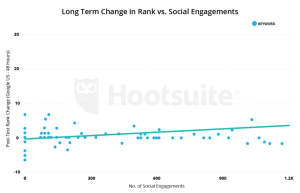There was a hilarious article in the New York Times, A Robot That Has Fun At Telemarketing’s Expense. It got me to thinking about the future of buying and selling.
The sales and marketing automation markets are among the hottest SaaS markets around. Each year, 1000’s of new suppliers of software solutions emerge. Collectively the markets are expected to generate 10’s of billions of revenues.
All of this supposedly oriented at making sales and marketers more efficient and effective.
We are drowning in the output of these tools. We are drowning in emails, most of which are irrelevant. While the tools are supposed to help improve the targeting and relevance, marketers don’t bother with it. 87% of emails have no or limited targeting. After all, why worry about being relevant, when you can just play a numbers game, papering the web with endless emails about your cool products. It seems we have unlimited ability to broadcast and the analytics help us understand the “engagement.”
We don’t even get the opportunity to read that white paper we download, because we are getting a phone call (from a local area code), asking us about our interest in the products of the company. “No, I’m not interested in your products, I’m interested in your white paper. Why don’t you talk to me about that?” Of course they can’t, their script doesn’t allow that option, but they can set up a meeting with someone who can.
We got digital mounds of content stacking up, available to all. Most seems to be collecting digital dust.
We’ve got tools that prompt and remind us about everything. Do this, don’t do that. We’ve got scripts for every situation, we know the key piece of content to send, based on the analytics, so we don’t have to think about the conversation.
The tools tell us the words to say, then measure the response from the customers, telling us more words to say and when, based on the response. We are lost without our devices, we sit in meetings, leveraging the latest collaboration tools, while at the same time multitasking and participating in a separate conversation across the globe or even across the table. Yet our meetings are increasingly ineffective.
We don’t know what to do or say, until we look at what the app prompts us to do or say, “Here are your coaching objectives, make sure you cover this. Here’s the latest analysis of our products in your industry and the results other customers are presenting. We’ve heard that objection before and based on an analysis of all the responses, here’s the response that causes us to win—sorry I don’t know if it answers your objecting……..”
We do this all this in the spirit of connecting more effectively with our customers, engaging them better, and making us more efficient and impactful.
The data is interesting, however. Time spent on selling and selling activities is on the decline. People are spending more time updating CRM and the other tools. Quota performance is declining. Customers are disengaging, choosing digital wandering over engaging. It seems our solutions are to crank up the volume of marketing programs–more emails, more content, more SEO optimization, tweak the analytics.
Ever the opportunist, I’m wondering how to jump in this multibillion band wagon. What’s the cool tool I can bring to market. Then I read the NYT article, and it strikes me. Buyers have to have the same problem sales and marketing has, only it’s from their point of view. The next emerging market has to be Buying Automation. After all, the sales and marketing automation markets are terribly crowded and confusing. we know there will be dramatic consolidation.
But the Buying Automation market is nascent. Yes, Google, Bing, and Yahoo (remember them) have the lion’s share–through search. And the sales/marketing people are always increasing their spending on SEO, PPC, and other programs. But there is so much more to do. The guy in the NYT has a solution for dealing with all the inbound prospecting calls, and the white paper calls. We can refine and tune it. We can look at tools to handle email. We can have buying automation tools we can leverage in meetings to script our responses, based on what the sales automation tools are telling the sales person to do. We have analytics that can interact with the sellers analytics and perhaps solve the problem without needing to bother us.
We can aggressively move the needle from 57% (Brent got a little miffed when I referred to it as tired–we had a good laugh). As an overachiever, my goal is to provide buying automation tools to move it from 57% to 100%! Ultimately, we can cut out all the middle people, my buying app will engage with your selling app and figure everything out, issuing a digital contract, digital PO, with digital signatures! Our analytics will do battle with your analytics, arriving at an agreed upon price, all in nanoseconds. (As I riff on the idea, I wonder if Watson ever played chess with Watson? Who would win?)
But to achieve this vision, we need to get started with Buying Automation. It’s a huge market, with huge opportunity–can you spell Unicorn?
Phew, I needed to get that out of my system! Thanks for letting me play and for putting up with my tongue in cheek cynicism. I hope you had a little fun reading it.
In reality I’m a real fan of tools that help us be more effective, engage the right customers with the right conversations at the right time. Tools, implemented and used well can make us more impactful, effective, and efficient.
But I worry, when they become the crutch, when they become the substitute for being engaged, for being part of the conversation–shaping, guiding it, challenging others. I worry, when we no longer expect our people to think critically, to challenge, to figure things out. I worry, when we can’t help our customers and our people solve problems.
I think we probably need to pause, perhaps hit the reset button. What are you doing to train your people on critical thinking? What are you doing to help them learn how to solve problems and guide your customer in solving problems? How good are your people at figuring things out, how are you helping them get better.
Enough for now, I’m putting together a pitch deck for my first buying automation app. I have a meeting with investors for my seed round.
Business & Finance Articles on Business 2 Community(14)






